In the ever-evolving landscape of modern software development, Kubernetes has emerged as a game-changer for managing containerized applications at scale. However, harnessing the full potential of Kubernetes requires understanding its underlying patterns. In this blog, we will delve into Kubernetes patterns, demystifying complex concepts with real-world examples.
Understanding Kubernetes Patterns
Kubernetes patterns are best practices and architectural designs used to solve common problems encountered when deploying and managing applications on Kubernetes clusters. These patterns streamline development, enhance scalability, and improve reliability. In this document, we will describe various patterns, such as the Sidecar pattern, the Ambassador pattern, and others, that help address specific challenges and optimize application performance.
Sidecar Pattern
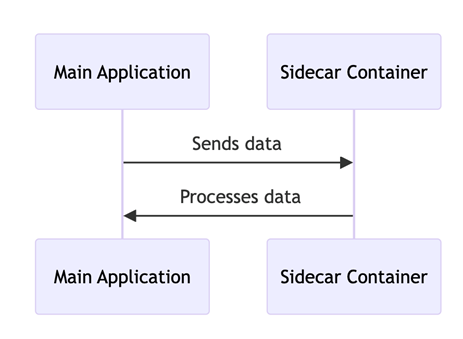
The sidecar pattern involves attaching additional containers, known as sidecars, to the main application container. These sidecars handle tasks such as logging, monitoring, or data processing, without altering the main application’s code.
Example: In a microservices architecture, a sidecar container can manage authentication or encryption tasks, allowing the main service to focus solely on its core functionality.
When to Use: Use the sidecar pattern when additional functionality, such as logging, monitoring, or security, needs to be added to the main application container without modifying its code.
Pros:
- Simplifies code maintenance by decoupling secondary concerns from the main application.
- Enables reuse of sidecar containers across multiple services.
Cons:
- Increases resource consumption as each sidecar container adds overhead to the pod.
- Requires careful coordination and synchronization between the main application and its sidecar(s).
Ambassador Pattern
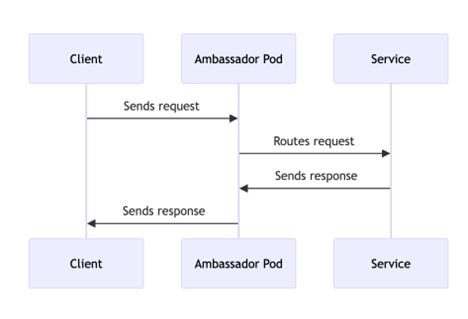
Description: The ambassador pattern acts as an intermediary between the application and external services or clients. It abstracts away complexities like service discovery, load balancing, and protocol translation, providing a uniform interface.
Example: A Kubernetes pod serving as an ambassador can route incoming traffic to multiple versions of a service, enabling seamless blue-green deployments or canary releases.
When to Use: Apply the ambassador pattern to abstract away complexities related to service discovery, load balancing, and protocol translation between the application and external services or clients.
Pros:
- Provides a unified interface for accessing external services, enhancing scalability and maintainability.
- Facilitates A/B testing, blue-green deployments, and canary releases by routing traffic to different versions of a service.
Cons:
- Introduces an additional layer of abstraction, potentially increasing latency and complexity.
- Requires careful configuration to ensure proper routing and load balancing behavior.
Adapter Pattern
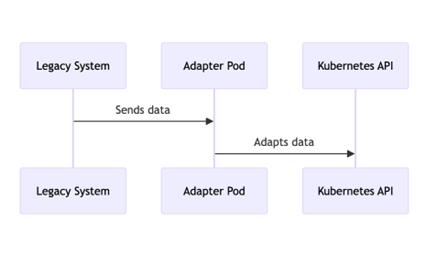
Description: The adapter pattern facilitates integration between existing systems and Kubernetes-native APIs. It translates custom APIs or data formats into Kubernetes-compatible formats, enabling interoperability.
Example: An adapter can translate configuration files from legacy deployment systems into Kubernetes manifests, allowing organizations to migrate seamlessly to Kubernetes.
When to Use: Employ the adapter pattern to integrate legacy systems or custom APIs with Kubernetes-native APIs, enabling interoperability and seamless migration.
Pros:
- Facilitates smooth transition from legacy environments to Kubernetes without rewriting existing applications.
- Enables reuse of existing infrastructure and investments.
Cons:
- Adds complexity and potential points of failure due to the need for custom adapters.
- Requires ongoing maintenance to keep adapters in sync with evolving APIs and requirements.
Singleton Pattern
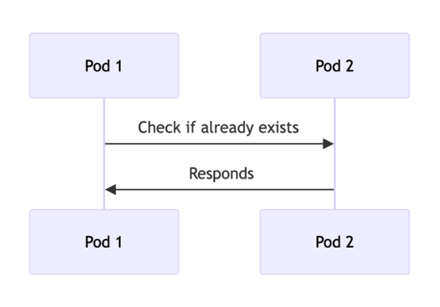
Description: The singleton pattern ensures that only one instance of a particular resource exists within the Kubernetes cluster. It’s commonly used for critical components like databases or caching systems.
Example: In a distributed system, a singleton pattern ensures that only one instance of a database pod is running at any given time, preventing data inconsistency issues.
When to Use: Use the singleton pattern for critical components like databases or caching systems, ensuring that only one instance of a particular resource exists within the Kubernetes cluster.
Pros:
- Guarantees data consistency and avoids conflicts that may arise from multiple instances of a resource.
- Simplifies management and maintenance by centralizing control of critical components.
Cons:
- Introduces a single point of failure, necessitating robust backup and failover mechanisms.
- May limit scalability and performance for highly distributed workloads.
Operator Pattern
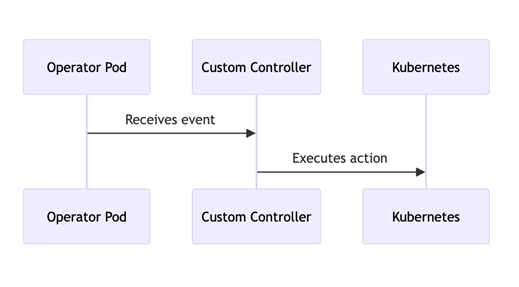
Description: The operator pattern extends Kubernetes functionality by automating complex operational tasks. Operators use custom controllers to manage application lifecycle events, such as deployment, scaling, and backup.
Example: A database operator can automate tasks like provisioning new database instances, performing backups, and scaling resources based on workload demand, reducing manual intervention.
When to Use: Apply the operator pattern to automate complex operational tasks, such as deployment, scaling, and backup, for Kubernetes-native applications.
Pros:
- Increases operational efficiency by automating repetitive tasks and reducing manual intervention.
- Enhances system reliability and consistency through standardized management workflows.
Cons:
- Requires development and maintenance of custom controllers, which can be complex and time-consuming.
- May introduce overhead and potential risks if not properly tested and managed.
Choosing the right Kubernetes pattern depends on factors such as application requirements, architectural considerations, and operational constraints. By understanding when to use each pattern and weighing their respective pros and cons, teams can architect robust, scalable, and maintainable solutions on Kubernetes, effectively navigating the complexities of modern containerized environments.

 English | EN
English | EN 